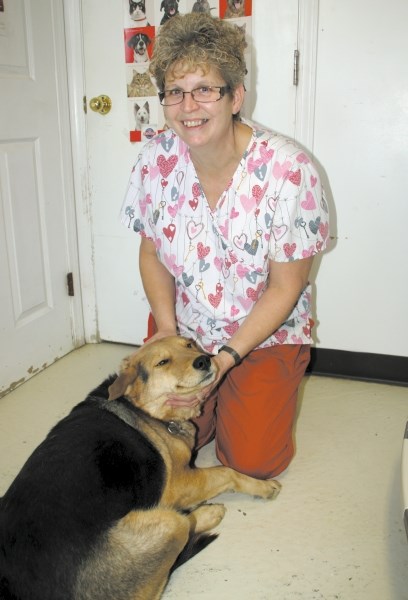The Bonnyville and District SPCA is being overwhelmed by the number of stray dogs they need to care for.
“Our stray numbers are high, 90 percent of our dogs are stray dogs,” said Heather Mutch, manager of the Bonnyville SPCA.
In 2014, the local humane society took in 113 stray dogs and 129 stray cats combined from the Town and MD of Bonnyville. Of those, only around one to two percent are true wild stray dogs, which means the remainder were someone's pets at one point.
Mutch said that responsibility plays a key role in the reason for the number of dogs at the shelter.
“Owners dump them at someone's yard, owners don't claim their dogs when they do know they're here because they think ‘Oh, we don't want it anymore so let the SPCA have it'. It's unfortunate that people treat animals like they're disposable.”
When a stray dog is spotted running around the town or in hamlets or subdivisions in the MD, there are two options. You can either call the Town or MD municipal office, or try to catch it and take it to the SPCA yourself. Mutch explained that before an animal can get brought to the shelter, you must first have approval from the Town or MD. If you have approval the municipal office will receive the bill, otherwise the SPCA asks for a donation when the animal is dropped off.
“We vaccinate them, we treat them for fleas and ticks and de-worm them. So that's an initial heavy cost for us for every animal that comes in, be it cat or dog. Then you have your staffing costs and your shelter costs,” said Mutch.
In the MD, Director of Public Safety Chris Garner said that the number of calls they get to pick up animals varies but typically in the spring and fall is when the issue is most prevalent. However, the main issue in the rural areas isn't so much stray dogs as it is dogs “running at large”.
“Our interpretation is that dogs need to be on someone else's property without permission. We have so many farm dogs that what someone might feel is a stray dog, is actually just a farm dog walking along the edge of their farm,” explained Garner, who added that if a dog is on Crown land it's not an issue.
If a dog has gotten loose and is running around a hamlet or subdivision within the MD, it is then considered to be a stray dog.
“When you see stray dogs or cats, a lot of the times they're not far from home, they're just wandering around. On the other hand, a lot of the time people dump them off too, so it's a really hard call,” Mutch said.
Regardless, both Mutch and Garner expressed that dogs should not be allowed to roam in rural areas. Under provincial law, if a dog is bothering livestock farmers are allowed to take matters into their own hands and can shoot the dog if they feel necessary.
“When you have a farmer where their livelihood depends on their cattle and you have a dog chasing the cattle, sometimes the (dogs) will attack the younger cattle or they'll run them so fast the little guys have a heart attack and die. So the farmer has a right to defend their livestock,” explained Garner.
If an animal is dropped off at the local SPCA, there is a fine that the owners are required to pay. The impound fee must be paid at the municipal office, before the owners can pick up their pet at the shelter.
There are a number of steps pet owners can take to prevent the situation from getting to that point.
“If people would microchip their animals we could get them home faster. If people would spay and neuter their animals, they would have less roaming problems because it would keep (the animal) home more,” said Mutch.
The other measure pet parents can take is to get their animal licensed, which is required by law for both dogs and cats if they live in the Town or dogs that live in a hamlet or subdivision within the MD.
For those that purposely abandon pets, Mutch said it's easier on the animal and the shelter if the animal is surrendered properly.
“If you want to surrender your dog there is a fee but at least you know they're safe and not out getting possibly hit.”
It also allows the SPCA to gather background information about the animal they're putting up for adoption. Like the donation asked for stray animals, the surrender fee
While there is still a long way to go when it comes to reducing the number of stray animals, Mutch said she is hopeful with the progress that has been made so far.
“The numbers are high but they are going down, which is nice to see because it means that maybe people are realizing that pets aren't a disposable item.”



